As we move closer and closer to winter’s official beginning, I’d like to focus on one of my all-time favorite winter books: The Snowy Day by Ezra Jack Keats. Many of you may know this one already, but I recently acquired a 1963 copy that I couldn’t wait to share on this blog.
The book centers in on a young boy named Peter, and follows him through a day of exploring in the snow. The book is distinct in its use of collage, handmade stamps, and other unique illustrative techniques.
The book opens with Peter, in the cutest little hand-stamped pajamas, looking out the window to discover that it had snowed while he slept.
Like any child who’s just woken up to discover a blanket of snow outside their window, he goes outside. Keats, a city kid himself, places Peter in a beautifully sparse urban place. I love the simplicity of the buildings—they’re just rectangular paper cut-outs—with the piles of snow sitting on top. Now is also a good time to mention how cuuuuuute his little red snowsuit is; something like it will certainly on the top of my buy-or-make list when I have a kid.
Crunch, crunch, crunch! I love his little footprints here. Although it never snowed very much in the winters of my childhood, whenever it did I recall following similar patterns of behavior as Peter. Keats, I think, really beautifully captures a child’s experience in the snow.
A highlight here is how Keats depicts the subtle complexities of snow so well. Instead of just a stark white mound, he uses color to add depth to the winter scene. I love his varied use of blues, pinks, purples, and greens.
A stick!
I’ll say it again: look how cute Peter is! Look at how his little feet are buried in the snow! Look at the beautiful shades of sky!
One important metric of what makes a good children’s book is how well-read-aloud it is. In The Snowy Day, it seems that Keats is astutely aware not only of how visually enticing a book for kids should be, but also how the writing enhances—or even makes—a child’s experience of the work. I am sure that the first time I read this book I didn’t read it, but heard it. The “plop!” that Keats inserts in this page, while a small detail, reflects something unique about children’s literature. Because one of the central goals of books made for kids is as a form of educational entertainment, moments like these are necessary to engage young listeners.
Everyone recalls a time when they wished they could be playing with the big kids. And the dark, marbled sky on this page is so beautiful and vivid.
Back to the bright world of Peter’s day! This might be my favorite, or second-favorite, page. I love the smiling snowman—he looks so cheeky and simple—and little Peter making angels in the snow.
Look at this sky! Keats is able to communicate so much movement in these still images. And I love how he uses the entire page to depict the motion of climbing up and sliding down the hill of snow.
Here’s where I find the story to really gain some richness ~ he puts the snow in his pocket to save it. As a child, I remember feeling extremely sentimental about snow. I would put it in the freezer and take it out to hold it for the next year until it eventually melted. Peter’s instinct is similar: to keep some of the beloved snow; to preserve it. (And who would I be if I didn’t mention how tiny and cute that little blue sock is on the next page.)
The floor! The bubbles! The duck! The boat!
It all comes crashing down when Peter realizes that his beloved snowball has melted in his pocket.
And many of us know the tragic feeling of waking up to see that yesterday’s snowfall has melted away. Growing up in Vancouver, WA, the snow never lasted quite long enough for child Murphy. Lucky for Peter, it was all a dream…
<3 A friend! I love this ending. The brilliance of Keats’ snowflake stamps, the scale of the snow piles which loom above the two small kids, the subtle infusion of city life (a friend across the hall), the little snowsuits. It’s perfect!
Ezra Jack Keats was an extremely influential and famous author of children’s literature. Born to a poor family in Brooklyn, Keats most frequently depicted stories of children in urban environments like the one he grew up in. The Snowy Day was his second novel, and the first to depict his character, Peter, who would show up in several other Keats books.
The Snowy Day tells a simple story of a child’s day in the snow. I hold it near to me because I see my childhood self in Peter. I have always been very enchanted by the snow and assume this book has something to do with it. Like many of you, this book was a favorite in my home growing up and continues to be one of my most cherished. In fact, as a senior in high school I decided to use the last lines of the book as my quote in the yearbook. To me, there is nothing as special as being a little kid and embarking on an adventure with a friend or sibling. As a twin, I can relate to the taking on of a new day with another kid at my side.
I love this book! I hope you do too.
Until next week,
Murphy








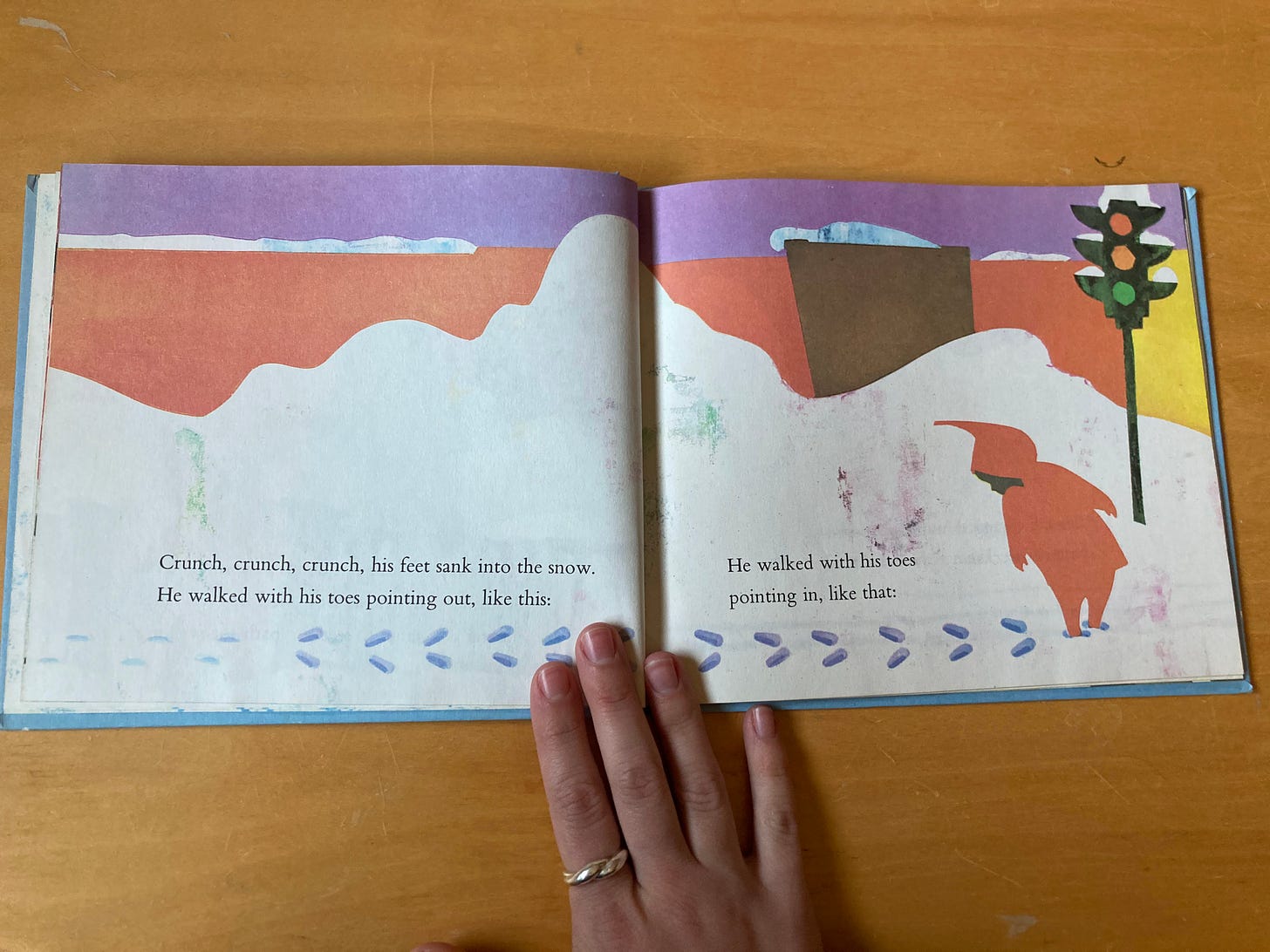
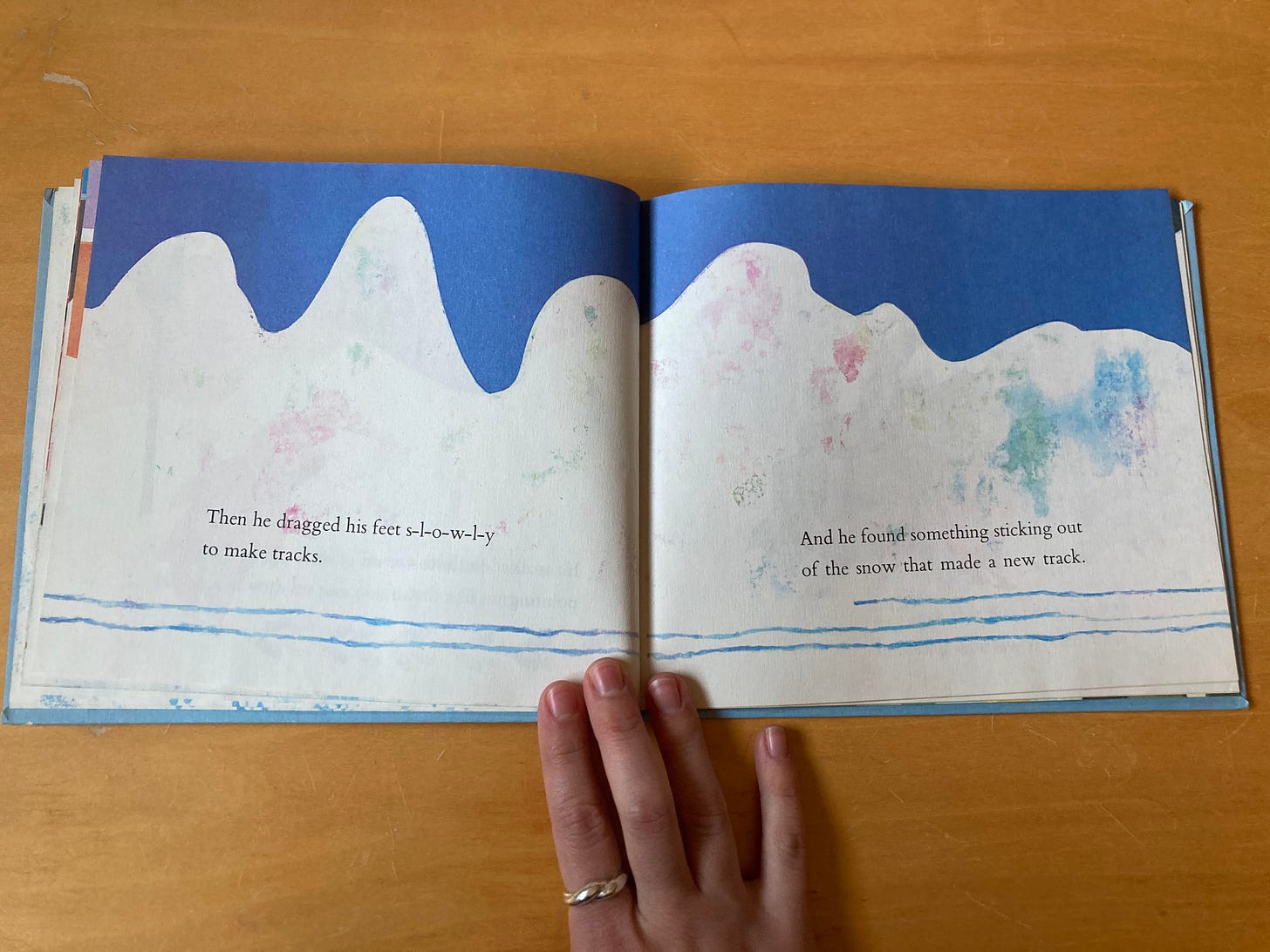


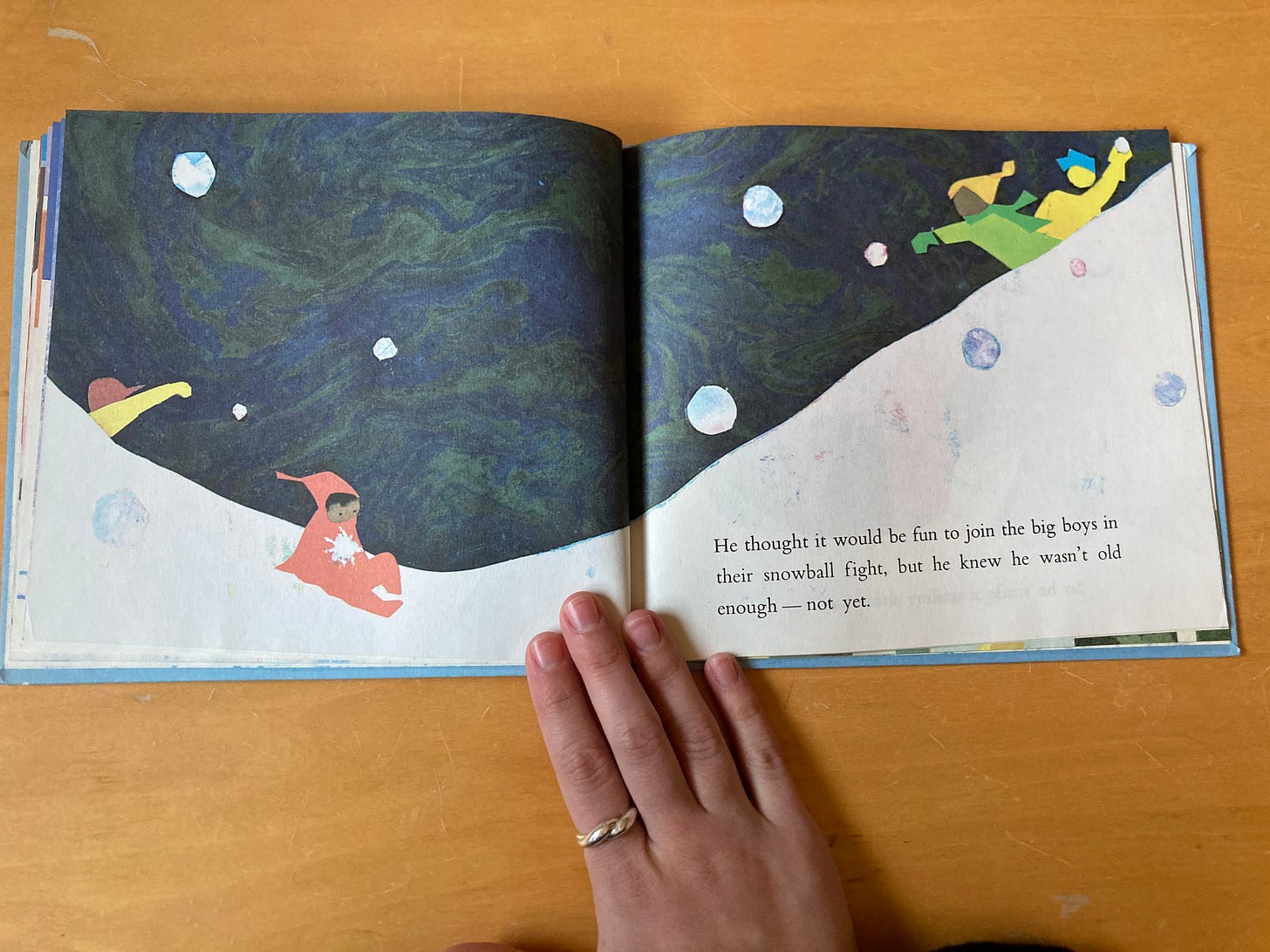
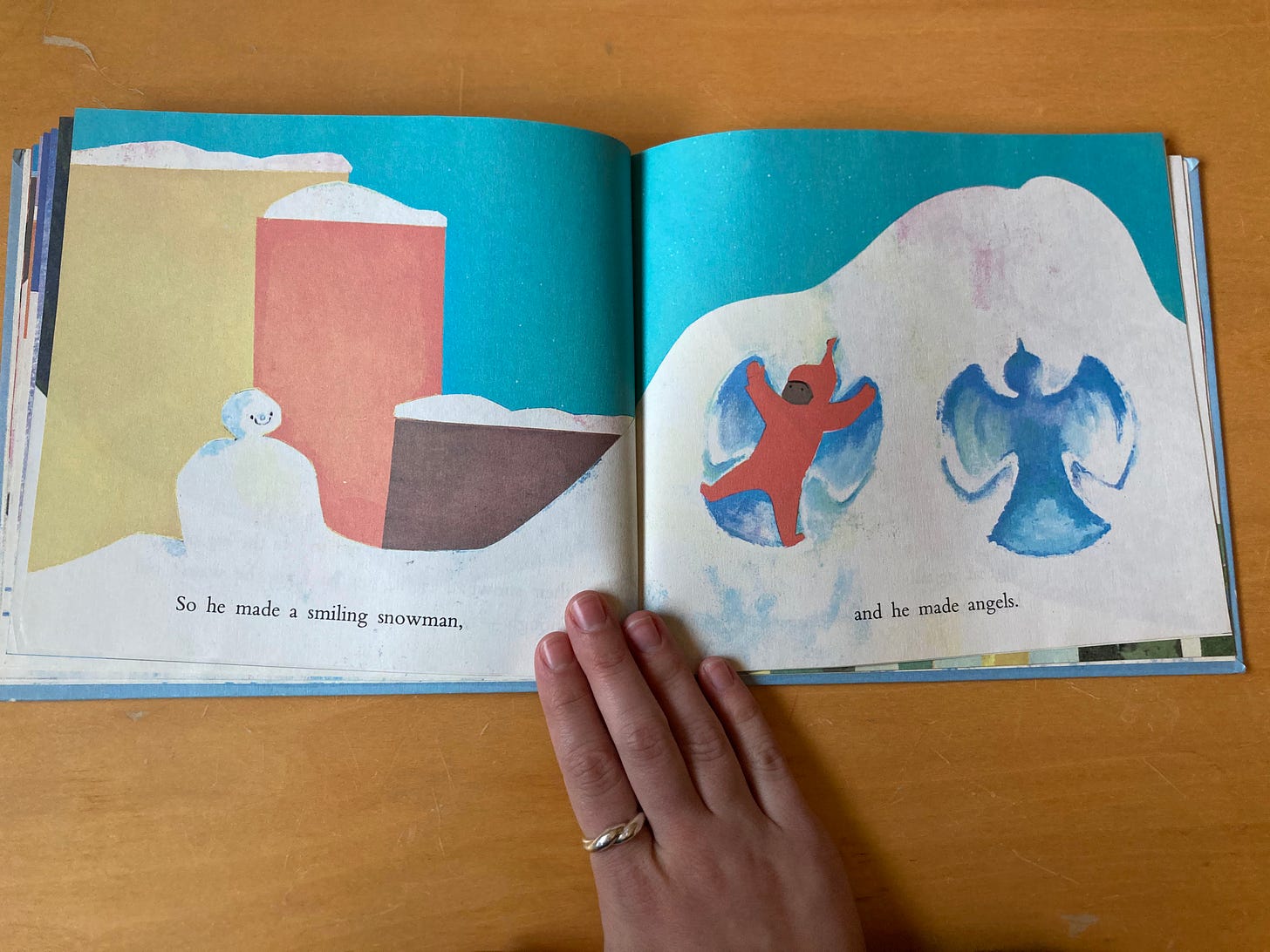

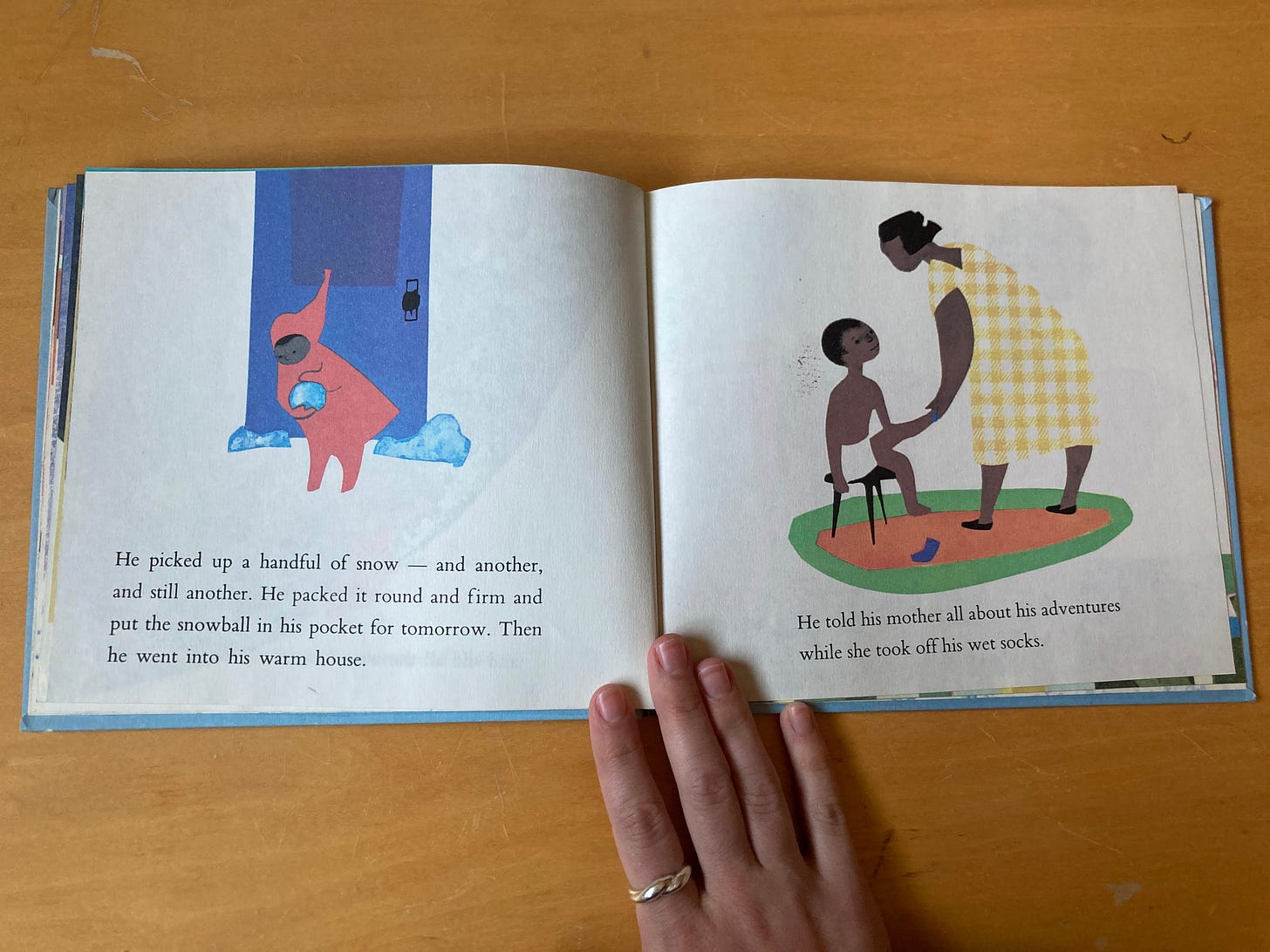
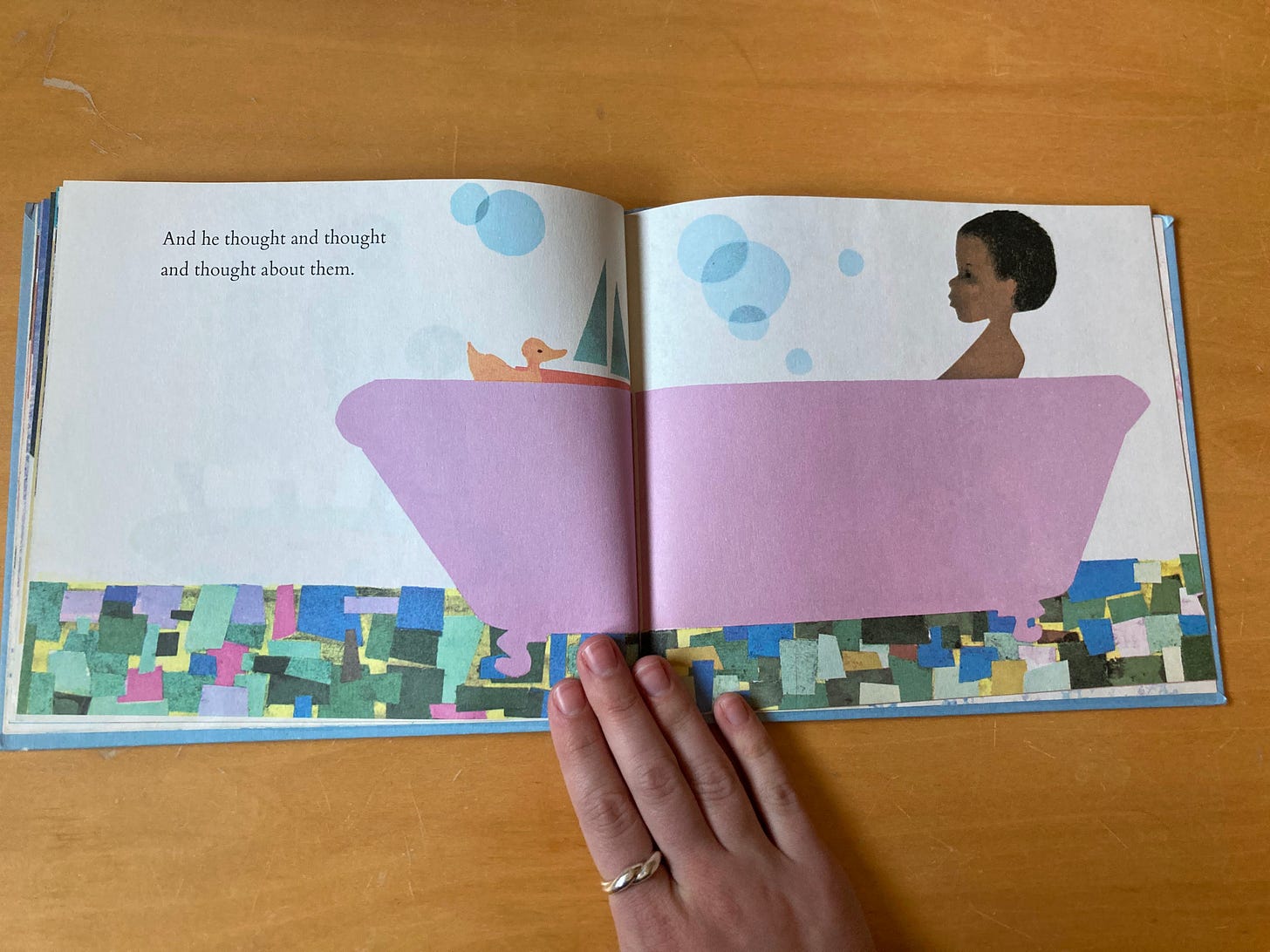



Memories of my childhood in Michigan with snow above the top of the mailbox ⛄️ Though I have read Snowy Day 100 times, your thoughts and comments gave me a new appreciation for the illustration and words. Ezra Jack Keats is a treasure!
The onomatopoeias are the absolute best! I will especially be listening for any plops during this year’s snow fall❄️